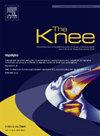Preoperative extra-articular proximal tibial varus deformities do not contribute to inferior subjective outcomes following fixed-bearing medial unicompartmental knee arthroplasty: A prospective study comprising 104 knees
IF 2
4区 医学
Q3 ORTHOPEDICS
引用次数: 0
Abstract
Background
This study aimed to evaluate the impact of preoperative extra-articular proximal tibial varus deformities on preoperative and postoperative subjective outcomes in patients undergoing medial unicompartmental knee arthroplasty (UKA).
Methods
A prospective study was performed among 104 patients undergoing robotic-arm assisted fixed-bearing medial UKA for isolated anteromedial compartment osteoarthritis. Patients were categorized based on their preoperative medial proximal tibial angle (MPTA), stratifying them into patients with tibial varus (MPTA <85°) and those without (MPTA ≥85°). Radiographic outcomes were assessed and patient-reported outcomes, including the UCLA activity score, the Oxford Knee Score, the Visual Analogue Scale for pain, Knee Injury and Osteoarthritis Outcome Score for Joint Replacement, and patient satisfaction were compared between groups preoperatively and at 12 and 24 months follow-up.
Results
Postoperatively, patients with tibial varus exhibited more pronounced residual varus alignment (3.8° vs. 0.7°, P <0.001), as well as lower MPTA and joint line obliquity (JLO) values compared with patients without tibial varus. Patients with tibial varus deformities expressed significantly higher satisfaction levels following their surgery (93.4% vs. 77.6%, P = 0.026) and reported higher UCLA activity scores both at baseline (6.4 vs. 5.1, P = 0.006) and 1 year follow-up (7.6 vs. 6.6, P = 0.018) compared with those without tibial varus. However, at 24 months, no significant differences were observed in PROMs or clinical improvement in PROMs between groups.
Conclusion
This study supports the safe utilization of fixed-bearing medial UKA as an effective surgical intervention for managing isolated anteromedial osteoarthritis, even in the presence of preoperative tibial varus deformities. While preoperative tibial varus may predispose patients to a more pronounced residual varus following medial UKA, subjective outcomes appear to remain unaffected.
术前关节外胫骨近端内翻畸形不会导致固定承重内侧单室膝关节置换术后的较差主观结果:一项包含104个膝关节的前瞻性研究
本研究旨在评估术前关节外胫骨近端内翻畸形对内侧单室膝关节置换术(UKA)患者术前和术后主观预后的影响。方法对104例采用机械臂辅助固定式内侧骨关节炎患者进行前瞻性研究。根据术前胫骨内侧近端角度(MPTA)对患者进行分类,将患者分为胫骨内翻(MPTA≥85°)和胫骨内翻(MPTA≥85°)两组。评估影像学结果和患者报告的结果,包括UCLA活动评分、牛津膝关节评分、疼痛视觉模拟量表、膝关节损伤和关节置换术骨关节炎结局评分,以及术前和12个月和24个月随访时两组患者满意度进行比较。结果术后,胫骨内翻患者表现出更明显的残余内翻对准(3.8°vs 0.7°,P <0.001), MPTA和关节线倾斜度(JLO)值低于无胫骨内翻患者。胫骨内翻畸形患者术后满意度明显高于无胫骨内翻畸形患者(93.4%比77.6%,P = 0.026),基线时UCLA活动评分(6.4比5.1,P = 0.006)和1年随访时(7.6比6.6,P = 0.018)均高于无胫骨内翻畸形患者。然而,在24个月时,两组之间在PROMs或PROMs的临床改善方面没有明显差异。结论:本研究表明,即使在术前存在胫骨内翻畸形的情况下,固定承重内侧骨关节炎作为治疗孤立性内侧前骨关节炎的有效手术干预也是安全的。虽然术前胫骨内翻可能使患者在内侧UKA后出现更明显的残余内翻,但主观结果似乎不受影响。
本文章由计算机程序翻译,如有差异,请以英文原文为准。
求助全文
约1分钟内获得全文
求助全文
来源期刊

Knee
医学-外科
CiteScore
3.80
自引率
5.30%
发文量
171
审稿时长
6 months
期刊介绍:
The Knee is an international journal publishing studies on the clinical treatment and fundamental biomechanical characteristics of this joint. The aim of the journal is to provide a vehicle relevant to surgeons, biomedical engineers, imaging specialists, materials scientists, rehabilitation personnel and all those with an interest in the knee.
The topics covered include, but are not limited to:
• Anatomy, physiology, morphology and biochemistry;
• Biomechanical studies;
• Advances in the development of prosthetic, orthotic and augmentation devices;
• Imaging and diagnostic techniques;
• Pathology;
• Trauma;
• Surgery;
• Rehabilitation.
 求助内容:
求助内容: 应助结果提醒方式:
应助结果提醒方式:


